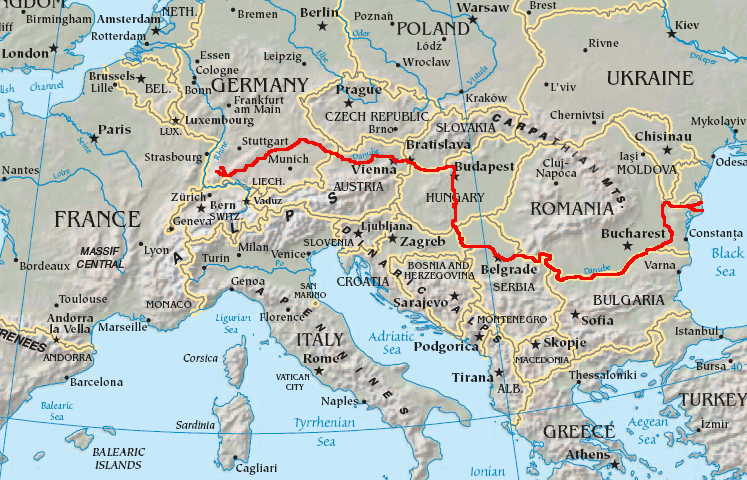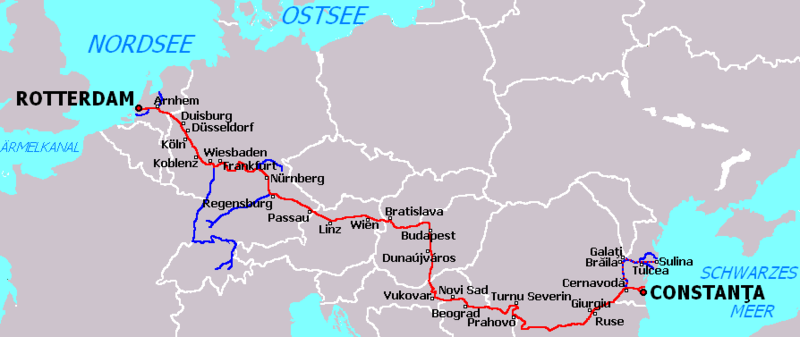The Danube is the longest river in the EU and the second longest river in Europe (after the Volga). It originates in the Black Forest in Germany and flows eastwards for a distance of some 2850 km, passing through four Central and Eastern European capitals, before emptying into the Black Sea in Romania and Ukraine.
The river flows through — or forms a part of the borders of — ten countries:
Germany, Austria, Slovakia, Hungary, Croatia, Serbia, Romania, Bulgaria, Moldova and Ukraine.
As Corridor VII of the EU, the Danube is an important transport route. Since the opening of the Rhine-Main-Danube Canal, the river connects the Black Sea with the industrial centers of Western Europe and with the Amsterdam - Rotterdam - Antwerpen Ports region. The Danube connects with the Rhine–Main–Danube Canal at Kelheim. The waterway is designed for large scale inland vessels (110×11.45 m) but it can carry much larger vessels on most of its course. The Danube has been partly canalized in Germany (5 locks), Austria (10 locks), Slovakia (1 lock - Gabcikovo) and in Serbia/Romania (2 locks - Djerdap I. and II.). Further proposals to build a number of new locks in order to improve navigation have not progressed, due in part to environmental concerns.

The Rhine-Main-Danube Canal , connects the Danube and Main rivers = connects the Black Sea and the North Sea, providing a navigable artery between the Danube, Main and Rhine ports. It was completed in 1992 and is from Kalheim to Bamberg 171 km long.

| 





